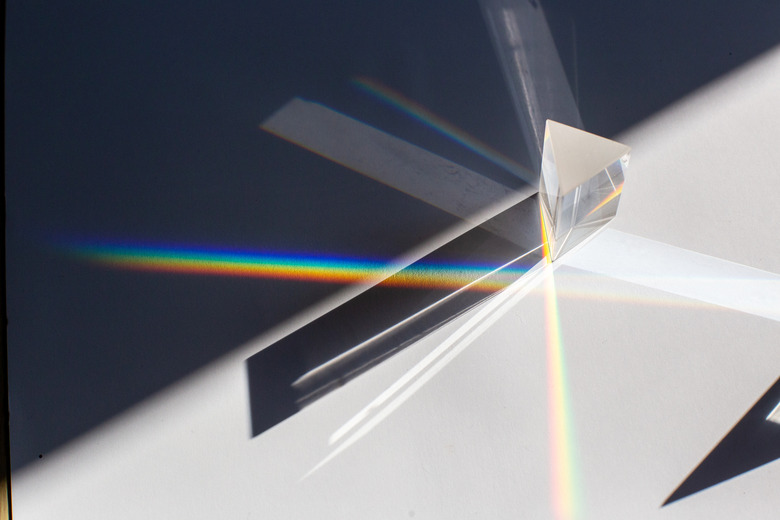Activities For Prisms
Rainbows tend to catch a person's eye and force them to pay attention. There is a beauty in the way the colors arc across the sky or gently glisten in the mist of a running sprinkler. Capture this magic in the classroom by experimenting with prisms and light.
Create a Rainbow
Create a Rainbow
This experiment will teach your students about the different forms of light that make up "white" light. For this experiment, you will need a light source, white paper, colored pencils and a prism (one for each student would be ideal).
Have the class form a hypothesis about what will happen to the light when it hits the glass prism.
Shine the light through the prism and onto the white piece of paper. A beautiful array of colors will be displayed. Explain the process of light refracting into its components: white light is actually made up of red, orange, yellow, green, blue, indigo and violet light. Explain that students can remember this by the mnemonic name ROY G. BIV. Finally, have the students use their colored pencils to make their own light spectra; tell them to draw the spectrum as close as they can to what is displayed by the prism in terms of thickness and vibrancy of the color bands.
Experiment with Different Light Sources
Experiment with Different Light Sources
You can expand on the above experiment by using different forms of light. Try running a red or a black light through the prism. Have the students try to determine whether the light from the red light is actually completely red or if it is made up of different frequencies just like the white light was.
Refraction
Refraction
Another activity you can do with the prism is to teach your students about basic refraction principles. Without going too much into the actual physics of the experiment (the equations and technical explanations), you can teach your students that when light flows into the prism, it does not flow directly through it but actually gets bent.
For this experiment, ask your students what they think will happen when you shine a light source through a prism at a piece of paper. Ask the students to mark on the piece of paper where they think the light will shine. Shine the light through the prism. As it travels through the prism, it becomes refracted and actually displays itself in a spot at an angle opposite to where the light source is. The exact angle is difficult to measure, but the point of the activity is to teach students that light can become bent as it travels through the prism.
References
Cite This Article
MLA
J.D., George Lawrence. "Activities For Prisms" sciencing.com, https://www.sciencing.com/activities-for-prisms-12742180/. 21 September 2009.
APA
J.D., George Lawrence. (2009, September 21). Activities For Prisms. sciencing.com. Retrieved from https://www.sciencing.com/activities-for-prisms-12742180/
Chicago
J.D., George Lawrence. Activities For Prisms last modified March 24, 2022. https://www.sciencing.com/activities-for-prisms-12742180/
